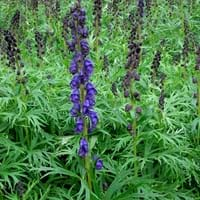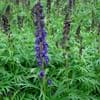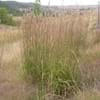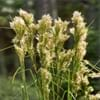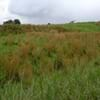Life Span
Perennial
Annual
Type
Flowering Plants, Perennial
Vegetable
Origin
Not Available
Mediterranean
Types
Yellow Monkshood, Carmichael's Monkshood, Kamchatka Aconite
cowpea , pigeon pea
Number of Varieties
Not Available
Habitat
low mountains
Fields, Loamy soils
USDA Hardiness Zone
4-8
Not Available
AHS Heat Zone
Not Available
12-1
Sunset Zone
Not Available
A1, A2, A3, H1, H2, 1a, 1b, 2a, 2b, 3a, 3b, 4, 5, 6, 7, 8, 9, 10, 11, 12, 13, 14, 15, 16, 17, 18, 19, 20, 21, 22, 23, 24
Habit
Upright/Erect
Vining/Climbing
Minimum Width
Not Available
Flower Color
Blue, Violet
White, Pink, Lavender
Flower Color Modifier
Not Available
Bicolor
Fruit Color
Non Fruiting Plant
Green
Leaf Color in Spring
Green
Green, Sea Green, Gray Green
Leaf Color in Summer
Green
Not Available
Leaf Color in Fall
Green
Green, Blue Green, Gray Green
Leaf Color in Winter
Green
Green, Blue Green, Gray Green
Leaf Shape
Upright
Egg-shaped
Plant Season
Fall, Summer
Spring, Fall, Winter
Sunlight
Full Sun, Partial shade
Full Sun, Partial Sun
Type of Soil
Moist
Clay, Loam, Sand
The pH of Soil
Not Available
Neutral
Soil Drainage
Well drained
Well drained
Bloom Time
Early Fall, Late Summer
Early Spring, Spring, Late Spring, Fall, Late Fall, Early Winter, Winter, Late Winter
Tolerances
Not Available
Variety of soil types
Where to Plant?
Ground
Ground
How to Plant?
Divison
Seedlings
Plant Maintenance
Medium
Medium
Watering Requirements
Do Not over Water, Requires regular watering
Do not let dry out between waterings, Needs watering once a week
In Summer
Lots of watering
Consistently
In Spring
Moderate
Adequately
In Winter
Average Water
Less Watering
Soil pH
Neutral
Slightly Acidic
Soil Type
Average, Moist
Clay, Loam, Sand
Soil Drainage Capacity
Well drained
Well drained
Sun Exposure
Partial Sun
Full Sun, Partial Sun
Pruning
Remove damaged leaves
No pruning needed, Remove damaged leaves, Remove dead branches, Remove dead leaves
Fertilizers
All-Purpose Liquid Fertilizer
All-Purpose Liquid Fertilizer, Compost
Pests and Diseases
Citrus leaf miner, Leaf spot, Mealy bugs, Mites, Rust, Verticillium Wilt
Aphids, Leaf curl, Powdery mildew, Red blotch, Root rot
Plant Tolerance
Drought
Light Frost
Flower Petal Number
Not Available
Single
Foliage Texture
Bold
Medium
Foliage Sheen
Matte
Matte
Attracts
Bees
Not Available
Allergy
breathing problems, Nausea, Rapid Heartbeat, Sweating, Vomiting, weakness
Diarrhea, Intestinal gas
Aesthetic Uses
Showy Purposes
Not Used For Aesthetic Purpose
Beauty Benefits
Not Available
For treating wrinkles
Environmental Uses
Not Available
Food for animals
Medicinal Uses
Gout, Heart problems, Inflammation, Joint pain, Kidney problems, Nerve pain, Wounds
No Medicinal Use
Part of Plant Used
Whole plant
Leaves, Seeds
Other Uses
Used in herbal medicines
Cosmetics, Making Shampoo, Used as a nutritious food item, Used As Food
Used As Indoor Plant
No
No
Used As Outdoor Plant
Yes
Yes
Garden Design
Cutflower, Mixed Border
Container, Edible, Herb, Vegetable, Vine
Botanical Name
Aconitum variegatum
PISUM sativum
Common Name
Aconite, Monkshood, Wolf's bane, Leopard's bane, Mousebane, Women's bane, Devil's helmet, Queen of all Poisons, or Blue rocket
Garden Pea
In Spanish
acónito
guisante
In Greek
monkshood
μπιζέλι
In Portuguese
Aconitum
ervilha
Phylum
Magnoliophyta
Magnoliophyta
Class
Magnoliopsida
Magnoliopsida
Order
Ranunculales
Fabales
Family
Ranunculaceae
Fabaceae
Clade
Angiosperms, Eudicots
Dicotyledonous
Tribe
Delphinieae
Not Available
Subfamily
Not Available
Not Available
Properties of Aconitum and Garden Pea
Wondering what are the properties of Aconitum and Garden Pea? We provide you with everything About Aconitum and Garden Pea. Aconitum doesn't have thorns and Garden Pea doesn't have thorns. Also Aconitum does not have fragrant flowers. Aconitum has allergic reactions like breathing problems, Nausea, Rapid Heartbeat, Sweating, Vomiting and weakness and Garden Pea has allergic reactions like breathing problems, Nausea, Rapid Heartbeat, Sweating, Vomiting and weakness. Compare all the properties and characteristics of these two plants. Find out which of these plant can be used as indoor plant. If you are interested to decorate your house and garden, find out aesthetic uses, compare them and select the plant which will beautify your surrounding. Along with beautification, try comparing medicinal and edible uses of Aconitum and Garden Pea and you can choose the plant having best and most benefits.
Season and Care of Aconitum and Garden Pea
Season and care of Aconitum and Garden Pea is important to know. While considering everything about Aconitum and Garden Pea Care, growing season is an essential factor. Aconitum season is Fall and Summer and Garden Pea season is Fall and Summer. The type of soil for Aconitum is Moist and for Garden Pea is Clay, Loam, Sand while the PH of soil for Aconitum is Not Available and for Garden Pea is Neutral.
Aconitum and Garden Pea Physical Information
Aconitum and Garden Pea physical information is very important for comparison. Aconitum height is 130.00 cm and width 80.00 cm whereas Garden Pea height is 30.00 cm and width Not Available. The color specification of Aconitum and Garden Pea are as follows:
Aconitum flower color: Blue and Violet
Aconitum leaf color: Green
Garden Pea flower color: White, Pink and Lavender
- Garden Pea leaf color: Green, Sea Green and Gray Green
Care of Aconitum and Garden Pea
Care of Aconitum and Garden Pea include pruning, fertilizers, watering etc. Aconitum pruning is done Remove damaged leaves and Garden Pea pruning is done No pruning needed, Remove damaged leaves, Remove dead branches and Remove dead leaves. In summer Aconitum needs Lots of watering and in winter, it needs Average Water. Whereas, in summer Garden Pea needs Consistently and in winter, it needs Less Watering.
